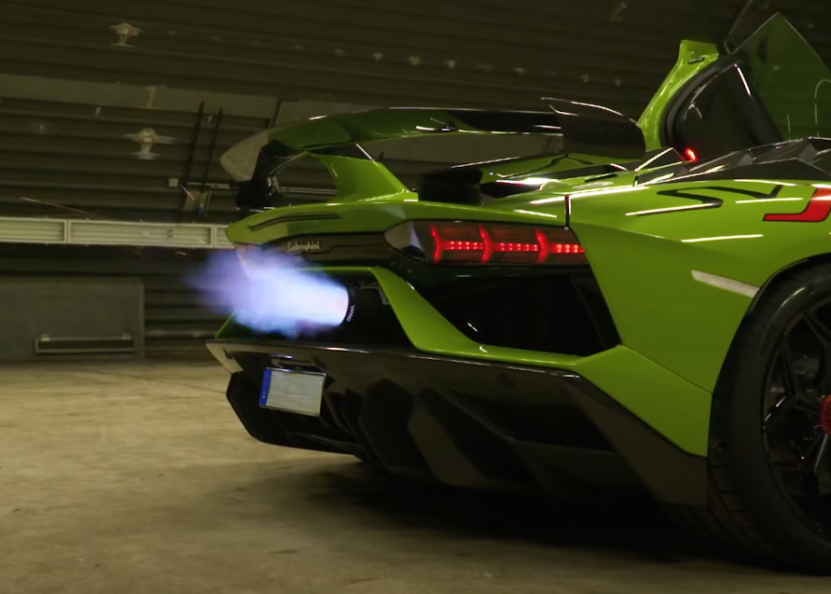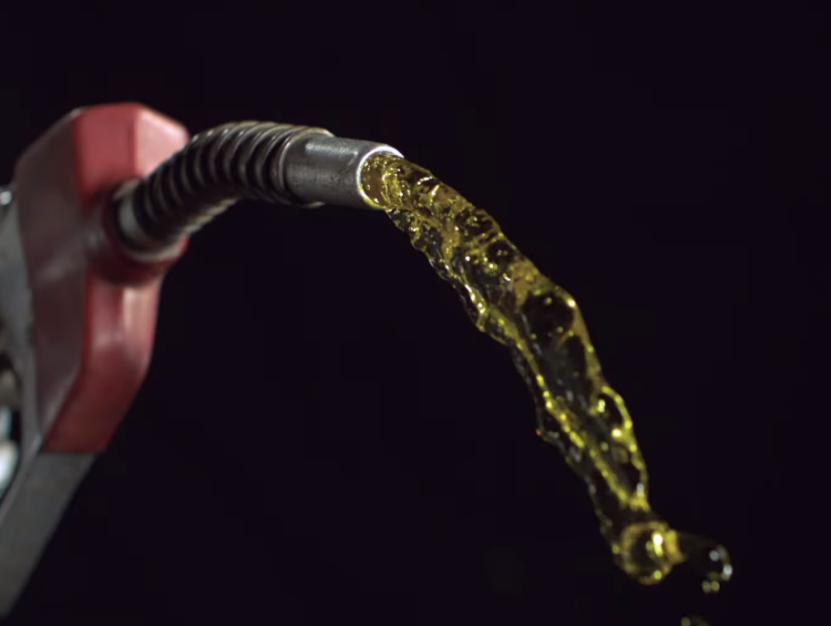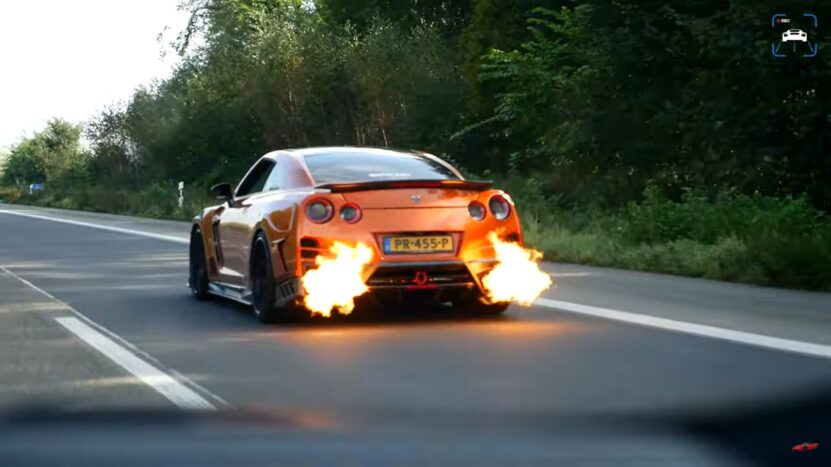Hey there, fellow automotive enthusiasts! Have you ever been at a car show or a race event and witnessed the mesmerizing sight of flames shooting out from a car’s exhaust?
It’s a trend that’s been catching on, especially among the car modification community. But before we get all fired up (pun intended), it’s essential to understand the science behind it and, more importantly, the safety and legal implications.
The Science

When excessive unburnt fuel from an engine finds its way into the hot exhaust passageway, it can lead to those loud crackling sounds and the dramatic flames we all love. This phenomenon is often associated with sports cars and is a spectacle, especially in competitive settings.
Factors Influencing Flames
- Fuel Mixture: The air-fuel ratio plays a significant role. When the mixture is adjusted in favor of fuel, it becomes ‘rich’, leading to surplus fuel moving into the exhaust stream.
- Ignition Timing: Engines are finely tuned, with parts working in sync. In some cases, the timing of the spark that ignites the air-fuel mixture is delayed, helping ignite the surplus fuel as it exits the exhaust port.
- Exhaust Design: Factory-fitted exhausts often have restrictions to meet various regulations. However, less restrictive or free-flowing exhausts can lead to loud crackles and flames.
Legal and Safety Considerations

While those flames can make your car the star of the show, they might not make you friends with the local law enforcement. It’s crucial to be aware of and adhere to local regulations concerning vehicle modifications.
Flaming exhausts are not just about the visuals. They can indicate inefficient combustion, and while the explosions happen outside the engine and might not damage it directly, the exhaust system isn’t designed for such shock loads. Over time, this can lead to failures, especially if the car isn’t designed for such events.
Safety First
If you’re considering modifications to achieve those flames, always prioritize safety. Ensure regular checks and be aware of the potential risks to prevent accidents or damage.
Step-by-Step Guide to Creating Flames
Modifying Fuel Mixture

The air-fuel ratio in your engine plays a pivotal role in determining whether you’ll see those coveted flames. When the mixture leans in favor of fuel, it’s termed ‘rich’. This rich mixture results in surplus fuel, which then moves into the exhaust stream.
Cautionary Note
Running an excessively rich mixture might give you those flames, but it’s not always the best for your engine’s health. It can lead to inefficient combustion, which is not what you want in the long run. For those who are serious about this, considering standalone engine management systems might be a good idea. They offer better control over the air-fuel ratio.
Adjusting Ignition Timing
Ignition timing is crucial for flame generation. It’s all about when the spark occurs. Normally, the spark happens as the piston reaches the top dead center. But if you delay this spark, combustion can still occur as the piston begins its exhaust stroke. This can lead to a portion of the combusted air/fuel mix exiting through the exhaust valve, producing that desired flame.
Safe Modifications
Adjusting ignition timing isn’t something to be taken lightly. It’s essential to make gradual adjustments and monitor the engine’s response. This ensures you don’t inadvertently harm your engine.
Upgrading Exhaust System

A free-flowing exhaust system is key to those loud crackles and flames. Factory-fitted exhausts often have restrictions to meet various regulations. But for those flames, you might want something less restrictive.
Aftermarket Options:
There are plenty of aftermarket exhaust components available. While they can enhance sound and flame visibility, it’s essential to choose components that are compatible with your vehicle and won’t harm the engine.
Installing Flame Kits
You might have seen them online or at car meets – kits specifically designed to make your car spit flames. These commercially available flame thrower kits are a popular choice for those who want the drama without diving deep into engine modifications.
Flame kits typically manipulate the air-fuel mixture and ignition timing to produce flames. They often come with a control module, a spark plug, and a coil pack. When activated, the kit interrupts the ignition, causing unburnt fuel to accumulate in the exhaust. A secondary spark plug, installed near the tailpipe, then ignites this fuel, producing a flame.
Installation Challenges
While the idea sounds simple, the installation can be a bit tricky. It’s essential to place the secondary spark plug at the right spot in the exhaust to get consistent flames. Moreover, the system needs to be wired correctly to ensure safety and prevent any damage to the vehicle.
Professional Tune-up
While DIY modifications can be fun, there’s nothing like the touch of a professional. Mechanics have the tools and knowledge to fine-tune your car for controlled flames without compromising engine health.
A professional can adjust the air-fuel ratio, and ignition timing, and even recommend specific exhaust modifications to achieve the desired effect. They can also ensure that all changes are in line with safety standards and won’t harm your vehicle in the long run.
Avoiding Pitfalls
One of the main reasons to rely on experts is to avoid unintentional damage. Incorrect modifications can lead to engine problems, reduced performance, and even legal issues. A professional will ensure that your car not only looks great with those flames but also runs smoothly.
Maintenance and Best Practices
- Regular Checks: If you’ve modified your car to produce flames, it’s crucial to conduct regular checks. This ensures that the modifications aren’t causing excessive wear and tear on your vehicle.
- Monitor Exhaust Temperatures: One of the key things to watch out for is the exhaust gas temperature. If it gets too high, it can indicate problems and potentially lead to overheating.
- Balance is Key: While those flames can add a dramatic touch, always remember to maintain a balance between aesthetics and performance. It’s great to have a car that turns heads, but it’s even better to have one that runs efficiently and safely.
FAQ
Can any car be modified to produce exhaust flames?
While technically most cars can be modified to produce flames, the ease and effectiveness of the modification will vary based on the car’s make, model, and engine type. It’s always best to consult with a professional before making any changes.
Are there any environmental concerns associated with shooting flames from a car’s exhaust?
Yes, shooting flames can result in the release of unburnt fuel and other pollutants into the atmosphere. It’s essential to be mindful of the environmental impact and ensure that modifications don’t excessively harm air quality.
How long do flame kits typically last?
The lifespan of a flame kit varies based on the quality of the kit, how often it’s used, and the overall maintenance of the vehicle. Regular checks and proper care can extend the life of the kit.
Are there insurance implications when modifying a car to shoot flames?
Yes, some insurance companies might consider flame modifications as a risk, potentially leading to higher premiums or even policy cancellations. It’s crucial to check with your insurance provider before making any modifications.
Wrapping It Up
So, you’ve ventured into the fiery world of exhaust flames, equipped with the knowledge of how it works, the steps to achieve it, and the precautions to keep in mind. It’s a thrilling modification that can make your car stand out, but it’s essential to approach it with both enthusiasm and caution.
So, whether you’re a seasoned car enthusiast or someone just starting in the world of automotive modifications, always remember to drive responsibly, stay curious, and enjoy the ride. After all, it’s not just about the destination (or the flames) but the journey itself.
Safe travels, fellow automotive aficionados! 🚗💨🔥
